MSI Announces New Krait and C232 WS Motherboards for Xeon E3 v5 CPUs
by Anton Shilov on May 6, 2016 10:15 AM EST- Posted in
- Motherboards
- Intel
- MSI
- Xeon
- Skylake
- E3
- Intel C232
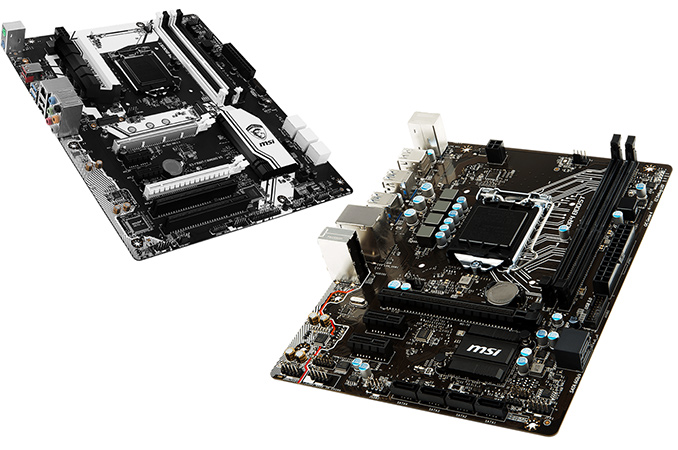
In the past week MSI has introduced two new motherboards that are compatible with Intel’s latest Xeon E3 v5 processors and based on the Intel C232 chipset - the motherboards are aimed at small form-factor workstations that have a suitable foothold in the enthusiast community. The new motherboards are the MSI E3 Krait Gaming V5 and the MSI E3M Workstation V5, and to widen the appeal the Krait model features white LEDs to appeal to modders and gamers.
By making its Xeon E3 v5 chips incompatible with consumer-grade motherboards, Intel drew a very clear line between the Core and Xeon families, something that helps the chipmaker and its partners to better position their products for personal and professional use. Some of the benefits of supporting Xeons lie in technologies as ECC, vPro as well as Trusted Execution, as long as the motherboard supports it. There are some users who prefer to use Xeons for desktop computing which is why several motherboards manufacturers recently introduced Intel C232 and C236 motherboards with more consumer-oriented features. This week, MSI joined them with two inexpensive platforms using C232.
The MSI E3 Krait Gaming V5 (E7A43), in its black and white livery, uses a five-phase power delivery with four DDR4-2133 memory slots that support up to 64GB of ECC. PCIe bandwidth comes through a PCIe 3.0 x16 slot from the CPU and an x4 from the chipset, allowing CrossFire but not SLI. Alongside this are two PCIe 3.0 x1 slots and two PCI slots via a bridge chip. A single PCIe 3.0 x4 M.2 slot is found alongside the six SATA 6Gb/s ports, although using the M.2 in PCIe mode will disable the PCIe x4 slot due to chipset limitations.
For audio and networking, we get an upgraded Realtek ALC1150 solution (with PCB separation and filter caps) and an Intel I219-V Gigabit Ethernet controller with MSI’s software that prioritizes user-specified traffic (in this case, MSI puts the focus on gaming). While there are no USB 3.1 controllers or ports here, in a little twist compared to the recent C232 motherboard we reviewed, there is a USB 3.0 Type-C port on the rear.
The MSI E3M Workstation V5 (E7A44) is a relatively simple m-ATX motherboard that has two DDR4 slots, a single PCIe 3.0 x16 slot, two PCIe x1 slots, six SATA 6Gb/s ports, six USB 3.0 connectors (with a hub), a Realtek RTL8111H Gigabit Ethernet controller, upgraded integrated audio powered by the Realtek ALC887 codec and that's about it. It's interesting to note that there's only a single 4-pin CPU power connector, but this motherboard is aimed at cheap single socket PCs, ideally with energy-efficient CPUs. The workstation name may indicate a different BIOS/software stack to the Krait Gaming, although aside from color I expect there to be very few differences.
MSI’s E3 Krait Gaming V5 and E3M Workstation V5 motherboards for LGA1151 processors are based on the Intel C232 PCH, which is not the top-of-the-range platform controller hub for the Xeon E3 v5, but is affordable enough and provides enough I/O capabilities (similar to B150 motherboards) for low-cost Xeon focused PCs. The PCH has eight PCIe 3.0 lanes, up to six USB 3.0 ports, up to six SATA 6Gb/s ports, but it is important to note the lack of support for vPro or Rapid Storage technologies.
The new LGA1151 motherboards from MSI clearly belong to the entry-level segment of the market: neither of the products have additional expansion capabilities such as USB 3.1 or Thunderbolt 3. We expect prices to be low when they show up on the market in the coming weeks.
Source: MSI


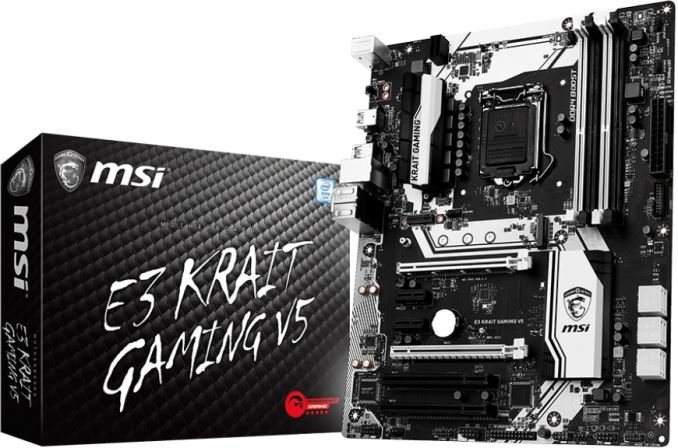
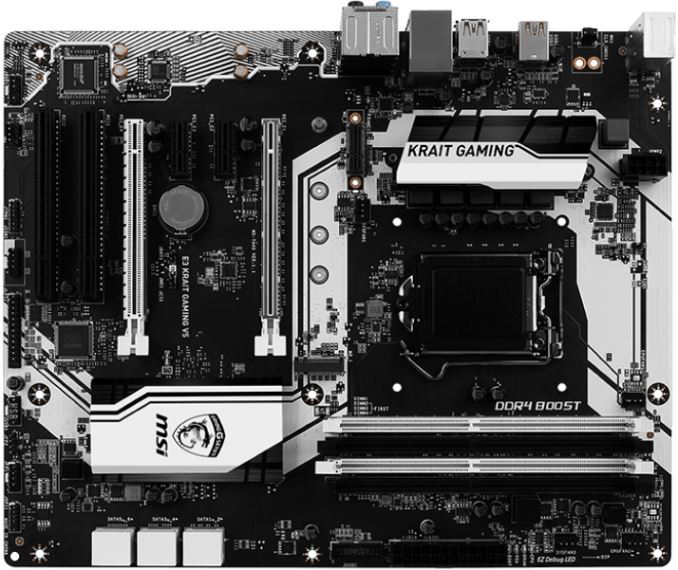





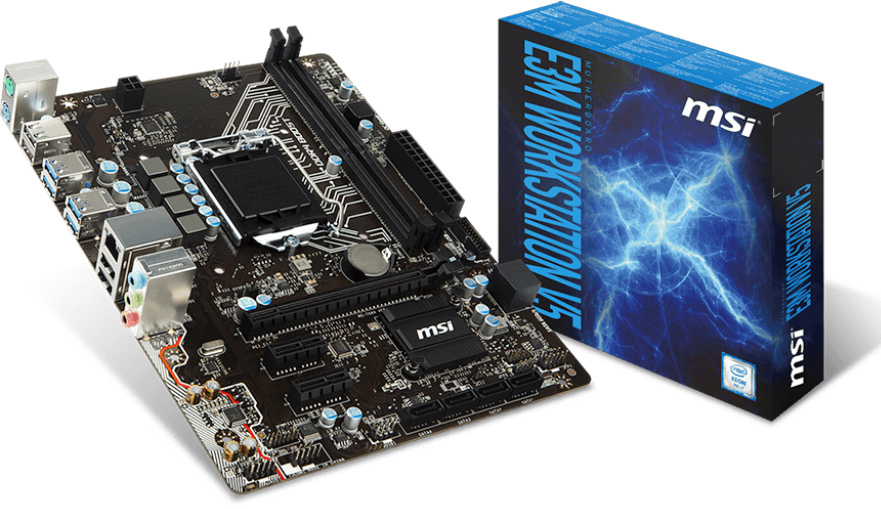
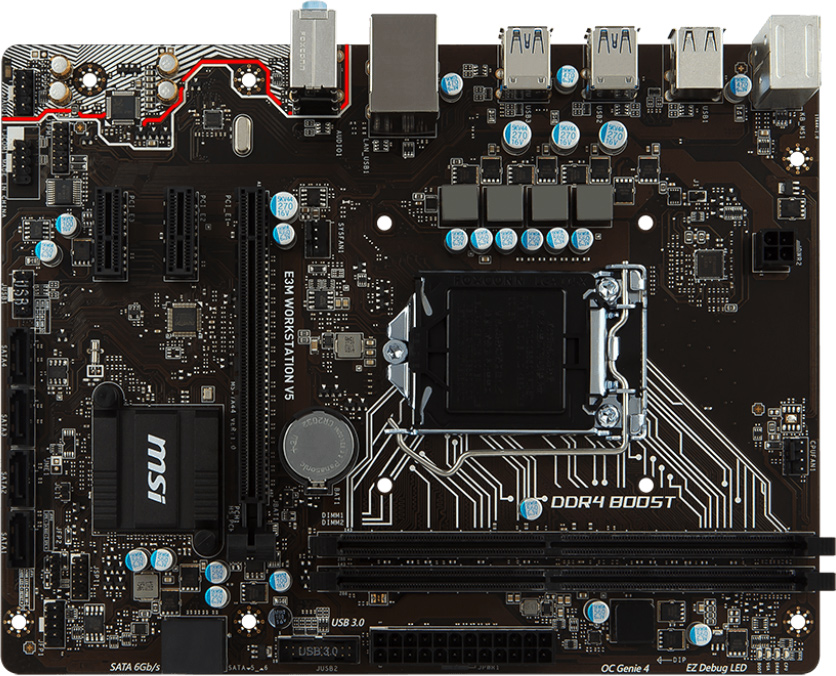













29 Comments
View All Comments
cruzinforit - Sunday, May 8, 2016 - link
You have completely missed the point of these specifically being for people who WANT Xeon E3s. They have other boards for other market segments. This specifically targets the people who want those chips.HomeworldFound - Friday, May 6, 2016 - link
Every time I see the word Realtek I want to kill an engineer.dgingeri - Sunday, May 8, 2016 - link
For network, I'll definitely agree with you, especially on "workstation" motherboards. I have had significant compatibility and performance issues with their network controllers. Motherboard makers save about $3 on the chip, about $5 on the entire solution, by going with Realtek instead of Intel, and the trouble it creates hurts us many times that amount. They aren't worth it. I'd pay the extra $5 to get a less troublesome motherboard.Their audio solutions have been pretty good, in my experience. They mostly use generic drivers within Windows, and don't require special control panel software from the manufacturer to control most of the features, but can use them if the user wants. The compatibility issues with them have been getting better and better over the last 10 years, to the point they're just about the best audio solution out there right now.
BurntMyBacon - Monday, May 9, 2016 - link
@HomeworldFound: "Every time I see the word Realtek I want to kill an engineer."Aw. Their audio solutions are ALL that bad. Some of them can be pretty decent with the right software package.
You say they make LAN chips as well. Are you sure those aren't decoys? Network land mines? Practical jokes? I need to sit down.
BurntMyBacon - Monday, May 9, 2016 - link
Their audio solutions AREN'T ALL that bad. (need edit)Duwelon - Sunday, May 8, 2016 - link
PS2 ports? Really? Does anyone still use those in 2016? Realtek NIC is definitely a fail for a "workstation" board. It seems like they're placing their bets on marketing alone to sell these and not the design decisions or quality of the components.dgingeri - Sunday, May 8, 2016 - link
PS2 keyboards and mice have lower processor overhead than USB. USB devices are controlled entirely by software, but PS2 devices have their offloaded controllers. USB mice will sometimes "stutter" during processes of high overhead, where PS2 mice won't. (If you doubt that, try running WinXP SP2 on a single core processor machine and move the mouse around during Windows Update. It is most obvious there.) Also, USB keyboards may not read all keypresses during high processor usage. I've known some gamers that prefer PS2 keyboards and mice specifically because of that. With the quad core and higher processors available today, it doesn't make as much of a difference, but some people still prefer PS2 anyway.jihe - Monday, June 6, 2016 - link
Well yeah, wouldn't buy a board without ps/2. My IBM model M is far more important.Michael Bay - Monday, May 9, 2016 - link
Is there a tangible advantage in buying such a motherboard for gaming machine compared to something hi-end on i7, though? It`s not like we`re processor-constrained in general these days.